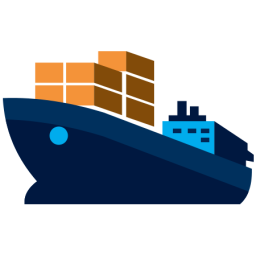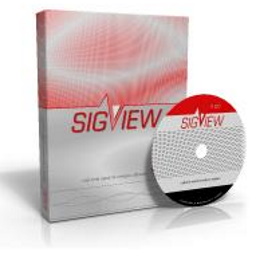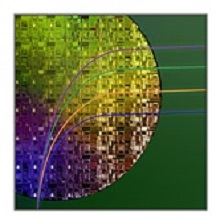 COAA ShipPlotter 12.5.6.1
COAA ShipPlotter 12.5.6.1
AIS is a system used by ships to communicate with each other about their position as part of a global maritime safety system. From December 2004, all ships with a tonnage of over 300 tons must be equipped with an AIS system to broadcast information about the ship to any suitably equipped receiver. AIS uses very short bursts of high-speed data on two VHF channels in the maritime band. The two frequencies used are 161.975 (Marine ch 87 AIS) and 162.025 (ch 88 AIS) MHz. Ships broadcast their identity, position, course, speed and destination so that other ships can track their movements. Using a low-cost radio scanner tuned to one or the other channels and ShipPlotter software running on your PC, you will be able to view a real-time, radar-like map (below) of all ships large ships moving in your area along with information about their destinations, estimated arrival times, and even the size of each vessel.
ShipPlotter decodes the AIS digital signal from each ship using the sound card in your PC. You need a suitable VHF band radio receiver tuned to one of the two AIS channels. The program decodes the received digital data and displays it in various formats.
Some main features:
- Signal Mode - In Signal Mode, ShipPlotter displays raw digital signals on your PC screen as a diagnostic display help you set up the system.
- Message Mode - In Message Mode, ShipPlotter displays each decoded message in simple language on your PC screen.
- Ship Mode - In Ship Mode, ShipPlotter displays each decoded message in simple language on your PC screen. There is a line in the display for each ship. Depending on the format of the message received from the vessel, the information may contain the vessel's MSSI number, name, destination and estimated arrival date and time, length, beam and draft as well as the latest position report receive. from the ship.
- Chart Mode - In Chart Mode, ShipPlotter displays the position and identity of each ship on the chart of the area. ShipPlotter comes with a general purpose world map but you can add your own map to ShipPlotter simply by digitizing the chart to create a graphic file BMP or JPG and edit the chart using tools built into ShipPlotter . ShipPlotter can also read BSB format marine charts subject to system performance, memory, etc. Yours can handle the size of the chart.
- Ship details - In chart mode, if you right-click on one of the ships shown on the chart, a pop-up window (right) will show them all data received about the vessel you have selected. If you are connected to the Internet, there is a Search button that will access the ITU ship names database to discover more detailed information about the ship including its port of registry.
- Message log - ShipPlotter can store all received and decrypted messages in a text file for later analysis. It can also store messages in unencrypted formats, in hex format for subsequent decoding.
- Radar view - ShipPlotter can display ship position and identification on a circular display centered on the user's location, this can be Dynamic location based on positions from connected GPS receiver. This radar screen can be North Up or Heading Up.
- Serial input - ShipPlotter can decode messages received from the dedicated AIS receiver using the NMEA serial format.
- Serial Output - ShipPlotter can output demodulated messages to any AIS compatible serial plotter using the NMEA serial format .
- GPS Input - ShipPlotter can include location data from the local GPS receiver on the displayed chart and can automatically center the chart map to the current location.
- Message Sharing - ShipPlotter can use the Internet to share your messages with others so that everyone can see the total number of messages sent by the other person. use join get.
- Local Sharing - ShipPlotter can share received messages with other instances of the program running on the machine over the local network.
- Visual SEO Studio 2.5.0.11
 SEO Checker Tool for Web Agencies, Freelancers, Internal SEOs, and Ecommerce Owners
SEO Checker Tool for Web Agencies, Freelancers, Internal SEOs, and Ecommerce Owners - Trancite FireScene 8.1.1.17514
 Simple pre-fire planning, field and event reporting software for fire fires
Simple pre-fire planning, field and event reporting software for fire fires - SoftwareNetz MyMoney 3.57
 The software that supports you managing and storing your finances is so easy and simple.
The software that supports you managing and storing your finances is so easy and simple. - SignalLab SIGVIEW 6.2.3
 Flexible signal analysis software package providing both offline and real-time capabilities
Flexible signal analysis software package providing both offline and real-time capabilities - Keysight MBP 2020.1
 A complete solution that provides flexible automation and simulation for silicon-based semiconductor devices
A complete solution that provides flexible automation and simulation for silicon-based semiconductor devices - Kaizen Home Manager 2024 v4.0.1009
 Tools help you can arrange and track his inventory to automatically create inventory items for each category
Tools help you can arrange and track his inventory to automatically create inventory items for each category - iMagic Kennel Reservation 2.16
 Assist pet kennels and boarding facilities in managing reservations, reservations and customer information
Assist pet kennels and boarding facilities in managing reservations, reservations and customer information - HSK Weldassistant SMART Edition 8.2.11
 Use welding process specifications and perform the calculation of the associated welding cost and optimize the welding cost
Use welding process specifications and perform the calculation of the associated welding cost and optimize the welding cost - ESRI ArcGIS Pro 3.5.4
 A desktop GIS application with many features developed with improvements and ideas from the community
A desktop GIS application with many features developed with improvements and ideas from the community - Altium On-Prem Enterprise Server 6.0.4.17
 The software is installed and managed by your own IT department, working in harmony with Altium Designer
The software is installed and managed by your own IT department, working in harmony with Altium Designer